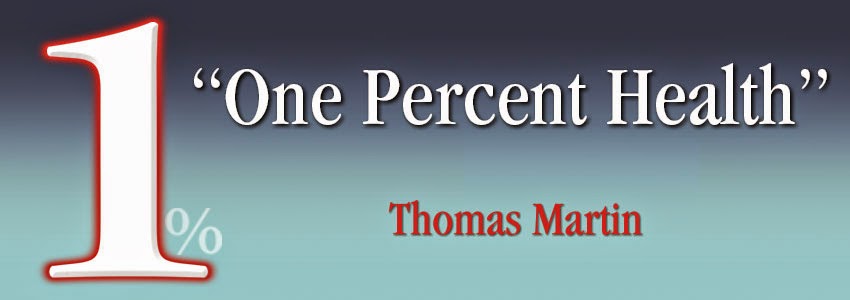by Sean Croxton
I don’t do Splenda.
There was a time when I had bought into the “made from sugar, so it tastes like sugar” hype.
But then I found out the truth…
But then I found out the truth…
I found out that Splenda was actually discovered in the chemistry department of Queen Elizabeth College in London back in 1975. That's when a grad student, Shashikant Phadnis, and his advisor, Leslie Hough, were attempting to create new insecticides by adding a highly poisonous chemical (sulfuryl chloride) to a sugar solution.
Hough asked Phadnis to test it, but the student misheard and “tasted it”.
Hough asked Phadnis to test it, but the student misheard and “tasted it”.
Whoops.
The prospective insecticide turned out to be surprisingly sweet. Soon after, Hough and Phadnis began working with a British sugar company to create the ultimate chlorinated sugar molecule.
The prospective insecticide turned out to be surprisingly sweet. Soon after, Hough and Phadnis began working with a British sugar company to create the ultimate chlorinated sugar molecule.
They called it sucralose. We call it Splenda.
Then I learned that Splenda’s chemical structure contains 3 chlorine molecules — no, not the chloride naturally found in food and salt, but the toxic chlorine found in swimming pools — and consuming it actually delivers this chlorine directly to the cells. Yikes.
And this…
Splenda is classified as an organochlorine — just like DDT (banned insecticide), Aldrin (banned pesticide), PCBs (banned electrical insulator), chloroform (banned), phosgene (banned), and more.
Banned. Banned. Banned. Banned. Banned.
Splenda is classified as an organochlorine — just like DDT (banned insecticide), Aldrin (banned pesticide), PCBs (banned electrical insulator), chloroform (banned), phosgene (banned), and more.
Banned. Banned. Banned. Banned. Banned.
Splenda. Safe for human consumption.
Am I the only one who finds this just a tad bit bothersome?
I don’t write this to scare you. That’s not my thing. But considering that millions of people around the world sprinkled this stuff in their coffee this morning, I kinda feel like this is something they’d want to know.
I don’t write this to scare you. That’s not my thing. But considering that millions of people around the world sprinkled this stuff in their coffee this morning, I kinda feel like this is something they’d want to know.
A few days ago, while reading The Hidden Plague, I stumbled upon yet another startling fact about the sweet insecticide.
In this Duke University study, researchers found that Splenda caused significant reductions in gut flora. In other words, it kills the good bacteria in your gut — at a dosage far less than the Accepted Daily Intake set by the FDA, by the way.
In this Duke University study, researchers found that Splenda caused significant reductions in gut flora. In other words, it kills the good bacteria in your gut — at a dosage far less than the Accepted Daily Intake set by the FDA, by the way.
Made from sugar, so it tastes like sugar…and kinda acts like an antibiotic.
As you know, imbalanced gut bacteria can lead to gas, bloating, yeast overgrowth, reduced nutrient absorption, and leaky gut.
Yes, leaky gut — the very problem lying at the root of autoimmune conditions like rheumatoid arthritis, Hashimoto’s thyroiditis, MS, and…
Yes, leaky gut — the very problem lying at the root of autoimmune conditions like rheumatoid arthritis, Hashimoto’s thyroiditis, MS, and…
Hidradenitis Suppurativa (HS).
Hidrade-WHAT?
Hidrade-WHAT?
This week on Underground Wellness Radio, Tara Grant, author of The Hidden Plague, stopped by to discuss a very common tongue twister of an autoimmune skin condition (HS) that no one is talking about, and how she was able to put it into complete remission by healing her gut with an autoimmune paleo protocol.
NOTE: The information in this episode applies to people with any autoimmune condition, not just HS. Don’t miss this.
NOTE: The information in this episode applies to people with any autoimmune condition, not just HS. Don’t miss this.
Here are my time stamps so you can fast forward to the good parts!
5:17 - The emotional turmoil of going 15 years without a diagnosis.
7:06 - What exactly is Hidradenitis Suppurativa, and how common is it?
14:36 - Why leaky gut is the REAL cause of autoimmunity…and how to know if you have it.
16:10 - The smoking gun that HS is an autoimmune disease.
18:56 - 2 commonly consumed antinutrients that poke holes in your gut.
24:36 - Hold the ketchup! Why nightshades are a BIG problem for people with autoimmunity.
26:13 - Why cow’s milk is “especially bad” for autoimmune conditions.
14:36 - Why leaky gut is the REAL cause of autoimmunity…and how to know if you have it.
16:10 - The smoking gun that HS is an autoimmune disease.
18:56 - 2 commonly consumed antinutrients that poke holes in your gut.
24:36 - Hold the ketchup! Why nightshades are a BIG problem for people with autoimmunity.
26:13 - Why cow’s milk is “especially bad” for autoimmune conditions.
29:45 - What Splenda does to your gut bacteria…and your weight!
35:00 - Can antibiotics wipe out your white blood cells?
46:32 - How much more “aware” of breast cancer can we possibly be?
48:00 - Behind the Scenes: NEVER do this before a live podcast.
46:32 - How much more “aware” of breast cancer can we possibly be?
48:00 - Behind the Scenes: NEVER do this before a live podcast.
You can also subscribe on iTunes for automatic downloads!
Enjoy the show.
Enjoy the show.
And STOP eating insecticides, my friend. :)
